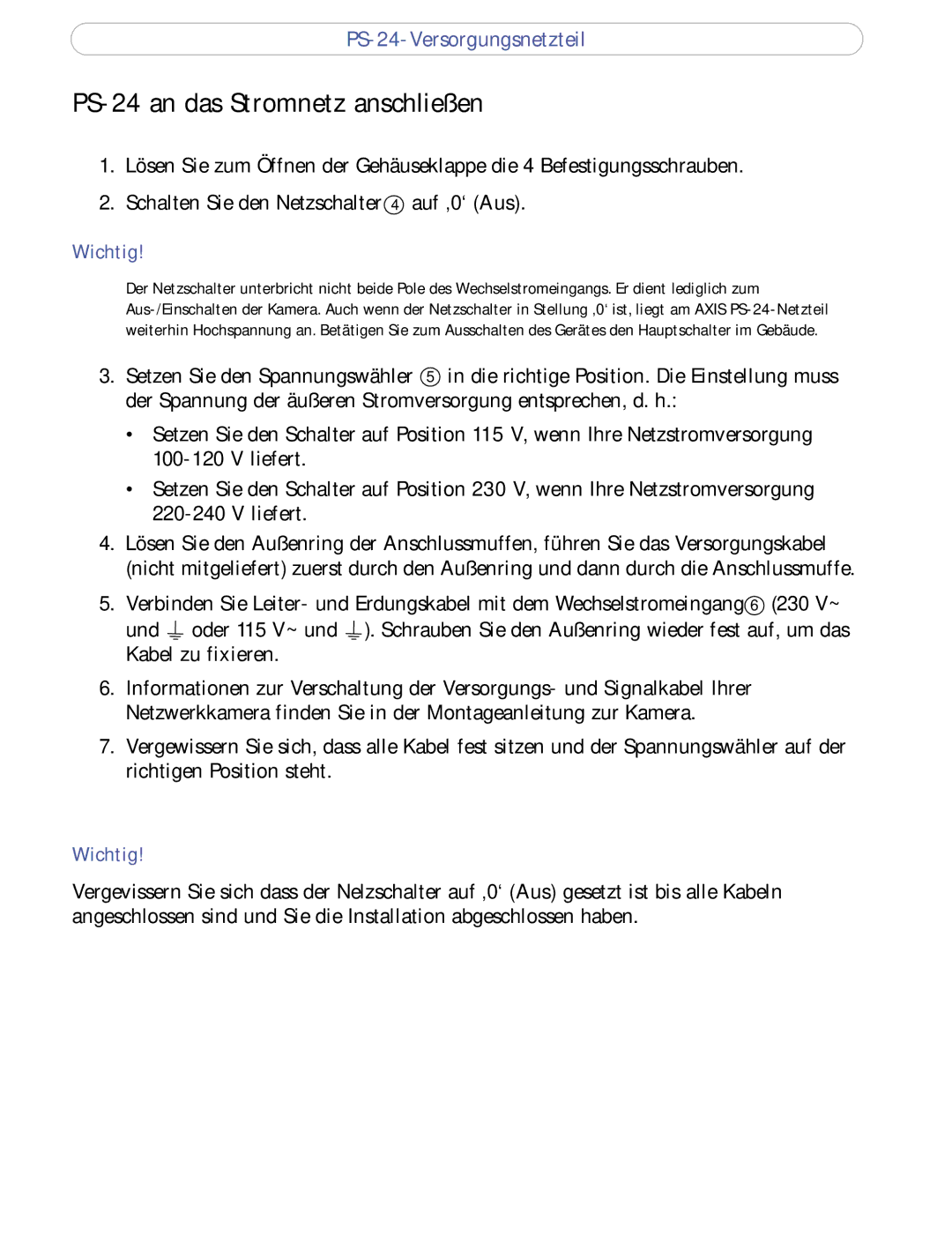PS-24 specifications
Axis Communications has long been a leader in network video solutions, and the PS-24 is a notable addition to its portfolio. This high-performance power supply is specifically designed for powering Axis network cameras and other PoE (Power over Ethernet) devices. The PS-24 is recognized for its reliability and efficiency, making it an ideal choice for various surveillance applications.One of the key features of the Axis PS-24 is its ability to deliver up to 24 watts of power per port, which is essential for operating high-performance IP cameras. With a total of 24 ports, it can power multiple devices simultaneously, providing flexibility for large installations. The versatile power supply is compatible with a wide range of Axis products, ensuring seamless integration within existing systems.
The PS-24 employs advanced power management technologies, which enhance the reliability and efficiency of power distribution. It uses IEEE 802.3af and IEEE 802.3at standards to deliver power, allowing it to work with both standard and high-power PoE devices. This makes it suitable for a variety of applications, from surveillance to access control systems.
In terms of build quality, the PS-24 is engineered to withstand harsh conditions. It features a robust design with built-in surge protection, ensuring that both the power supply and connected devices are safeguarded against voltage spikes and fluctuations. The device is also equipped with LED indicators for monitoring port status, which simplifies troubleshooting and maintenance.
Another standout characteristic of the Axis PS-24 is its energy efficiency. It is designed to minimize power consumption, helping organizations reduce their energy costs and environmental footprint. Additionally, the device is compliant with various energy efficiency standards, contributing to sustainability goals.
Installation and configuration of the PS-24 are straightforward, thanks to its user-friendly design. It supports rack mounting, making it easy to integrate into server rooms or network closets, while its compact form factor allows for optimum space utilization.
Overall, the Axis Communications PS-24 power supply is a robust, efficient, and reliable solution for powering network devices in any security infrastructure. Its combination of high wattage per port, advanced power management, and durable design makes it a preferred choice for professionals in the field.

